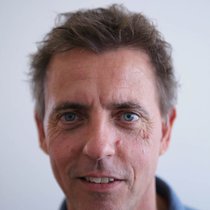The project is aimed at proving the concept in a user environment and quantifying the ecosystem services delivered by moss. In the Netherlands, more than 500 species of moss occur of which about 40 species grow on stony materials including concrete. Moss differs from other types of vegetation due to at least one important aspect: it absorbs most of its growth-supporting nutrients via its leaves and not via its rhizome (root) system. The rhizomes are essentially only used to attach itself to the underlying substrate. Uptake of nutrients via its dense leave system provides mosses with the potential to clean passing air and water from contaminants. Mosses can also provide water absorption and retention in case of heavy rainfall, evaporative cooling on hot days, and have a soundproofing effect. From an aesthetic point of view, there might also be benefits to be found in a biodiverse green wall compared to lifeless grey surfaces. All together, growing moss on receptive concrete has the potential to contribute to the liveability of cities and improve the well-being of citizens.
Development and application of moss receptive concrete
The main reason why certain types of concrete support spontaneous and abundant growth of moss are that these are relatively porous resulting in a high moisture retaining capacity which improves its bio-receptivity towards moss growth. At the Delft University of Technology, a specific high-moisture absorbing- and retaining and moss receptive concrete has therefore recently been developed. The aim is to apply this concrete as a layer on existing but otherwise bare concrete surfaces. By doing so these bare surfaces will over time be transformed into moss overgrown ‘living’ surfaces.
“Bio-receptive moss concrete changes dull grey concrete into a green and living material that increases local biodiversity and provides many valuable services that nature can offer to society.”
Henk Jonkers, Project lead & Associate Professor, TU Delft

Experimenting at Marinterrein Amsterdam Living Lab
At Marineterrein Amsterdam Living Lab we will start with the proof of concept from stage one. Applying the concrete layers that allows for moss growth on the existing buildings will create more green environment. Hereby, the environment will benefits from natural capital (ecosystem services provided by a thick layer of moss) which is spontaneous, virtually maintenance-free and therefore very cost-effective for the owner or manager.
The project is a potential 'game changer' because of its scaling potential. If the potential benefits bio-receptive concrete proofs to be effective, imagine the impact this could have on the built living environment.
Open questions and research objectives
Moss can deliver many services that can potentially improve the wellbeing of citizens. However, the open question is still to what extent moss is able to deliver each of the ecosystem services. The potential benefits must, therefore, be quantified first before firm claims can be made or conclusions are drawn. A research program involving consortium members (AMS Institute - WUR – TU Delft) therefore intends to answer the open questions through providing essential quantitative data.
Partners



